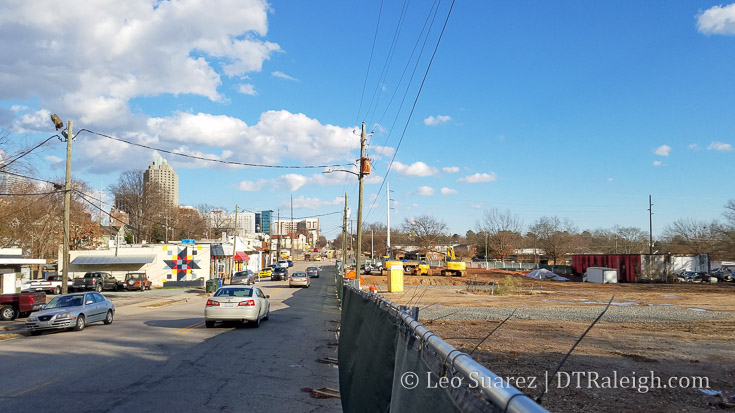
The sites of various car repair shops and the former Ice Market and Grill building have been cleared along West South Street. 42 units of residential are planned for this land, which were covered in more detail in this post.

The sites of various car repair shops and the former Ice Market and Grill building have been cleared along West South Street. 42 units of residential are planned for this land, which were covered in more detail in this post.
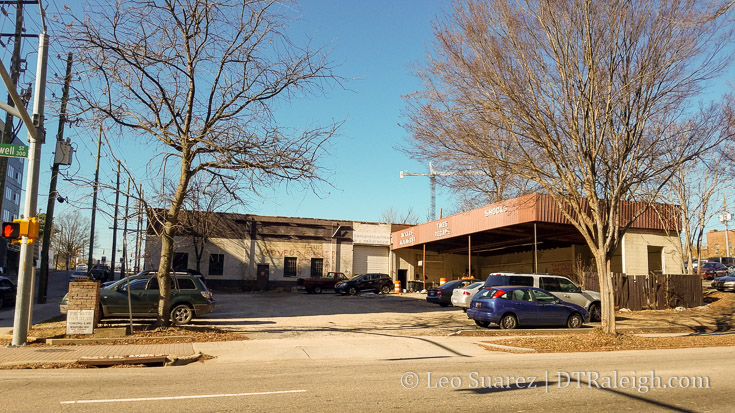
Corner of Davie and McDowell Street, December 2016.
Revisiting a topic we talked about in May 2015, new site plans for a hotel at the corner of Davie and McDowell Streets popped up at the city recently.
Plans show a 259-room dual-brand (Hilton Garden and Homewood Suites) hotel with interior parking in a 13-story building. The site plans suggest a different building style compared to the appearance commission renderings we saw in 2015. (no more curved corner?)
As always, here’s the site plan map for your viewing pleasure.
Click for larger
The site plan doesn’t indicate any ground-floor retail. I’m not saying there won’t be any; it’s just that this plan doesn’t show it.
The parking garage entrance would be along Davie Street indicated by the driveway in the plan.
I also spotted some outdoor spaces. The 14th floor will have a terrace in addition to a 2nd and 5th floor balconies.
One key detail to note is that the former Morton Trophy portion of the area is not part of this development. It’s predominantly the Turn Key Tire station, the red brick building that will be demolished to make way for this new hotel.
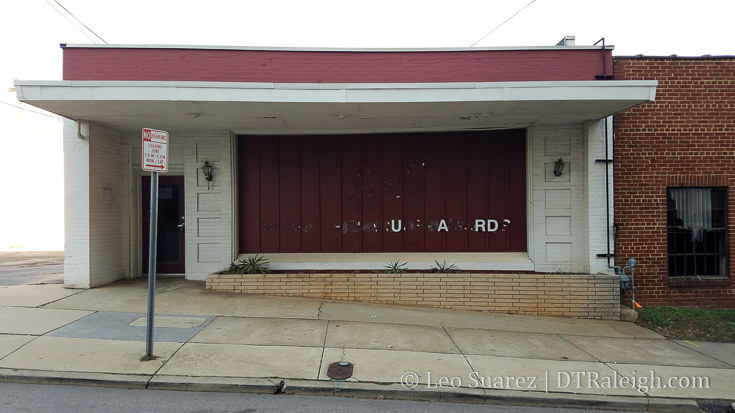
Former site of Morton Trophy on Davie Street
I also want to guess, seriously just a guess, that the “delay” in this project comes as a result in the council changing the required amount of parking for hotels in the downtown area.
You can revisit that topic here but in short, the required amount of parking for hotels was reduced in early 2016 from 1 space per hotel room to 1 space for every 2 hotel rooms. That sounds like incentive enough to rethink some development plans.
We’ll keep on eye on this one as it progresses.
The end of Kindley Street, 3D view from Google. Click to see on Google Maps.
Back in the summer of 2016, we took a look at the Gateway Center, the area along Salisbury Street near the performing arts center and Raleigh Convention Center.
I’m guessing few of us have had any real interactions with this property as it used to be a fenced in building owned by Duke Energy. The property has since been sold to Exploris and now submitted site plans show us of what could come to the area.
SR-099-16, called Gateway Southeast AKA Exploris School, shows a 10-story building consisting of parking, office space, and the consolidated K-8 charter school. The property doesn’t consist of the entire Gateway Center, just the portion across the Norfolk-Southern railroad tracks. (highlighted in orange in the map below)
Here is the site plan. The first is a screenshot from the plan, the second is the same thing but turned so that North points up. (approximately anyway)
As you can see from the plan, all the parking, offices, and school are contained inside the building. There will be a large courtyard and sidewalks around the building. The northern end of the “campus” will also retain some of the existing field as well as turn the old Duke Energy building into a lawn, perhaps for outdoor activities.
Development fans may find hope that in the future, there is room for more buildings here. Exploris has a track record of supporting innovative ideas and initiatives and their expansion to grades K-8 now may not be the end so you never know what long-term plans might come at the Gateway Center.
This is a good 2017 project to watch rise up and hopefully it applies a little pressure for the suburban-style campuses on the other side of the tracks to go urban in the coming years.
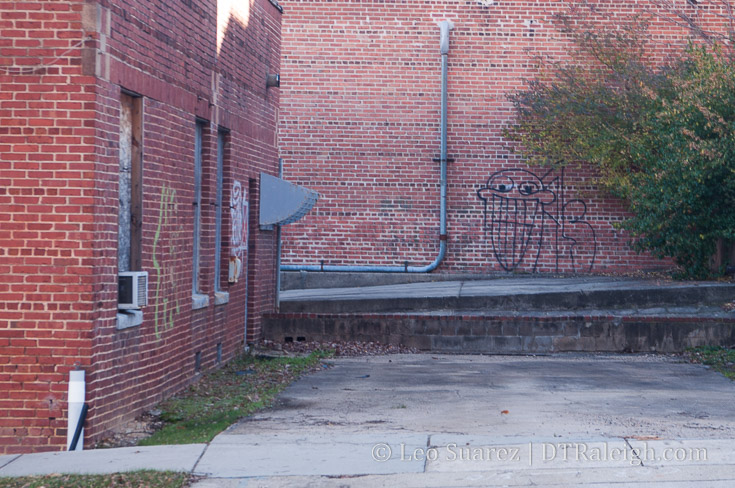
Some of the locals at Caswell Square, December 2016
Caswell Square has made the news recently as a piece of the state-owned land is being considered to be sold to a private developer. A few buildings on the square are planning to be renovated for medical offices. The North Carolina Council of State needs to approve the sale of these properties.
At first, it doesn’t sound like a big deal but if you aren’t familiar with Caswell Square then allow me to inform you.
Caswell Square is one of the original squares of the William Christmas plan. This plan laid out the street network for Raleigh and was to include five public squares, owned by the state.
You almost certainly have heard of Nash and Moore Square, operating as parks today, and also Union Square, where the historic North Carolina Capitol building sits. Lesser known Burke Square has the Governor’s Mansion, also called the Executive Mansion, and finally, Caswell Square.
Bounded by Lane and Jones Streets to the North and South, McDowell and Dawson to the East and West, Caswell Square, for over 100 years, has had state government buildings on it.

Interior of Caswell square, December 2016
The entire block is now consumed by buildings and surface parking. Some of those buildings are even empty and boarded up. Still owned by the state, they sit waiting to be torn down or for renovation work to take place.
As part of the Governor’s plan, called Project Phoenix, to revitalize the state government complex in downtown Raleigh, a portion of Caswell Square, owned by the state since the birth of Raleigh in 1792, is up for sale for private use.
Plans for medical offices in now empty buildings are on the table as millions of dollars in renovations would take place in the old buildings on the square. The sale would generate $1.75 million to the state.
Preservationists have come forward and claimed that the state should not offload the historic piece of property as it dates back to the original plan of Raleigh, the Christmas plan.
Below, are the three empty buildings being discussed for sale. They are located primarily along Dawson Street, next to each other, starting from the corner of Dawson and Lane.
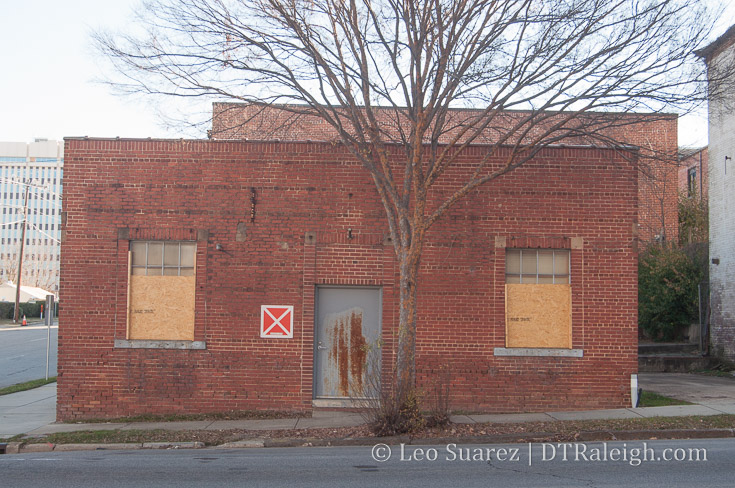
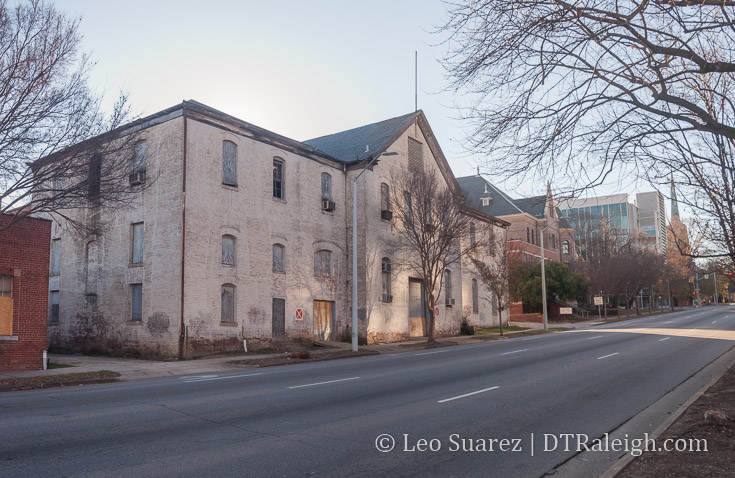

The Oral Hygiene Building.
For me, I’ve been a huge supporter of the ideas in Project Phoenix but this one makes me pause. Offices can go anywhere but public squares aren’t being planned anymore. I’m not sure I agree with those that want to sell of parts of Caswell Square.
First, let’s take a look at what it’s like around Caswell Square. Below is a Google Map I made. (If you can’t see it, click here)
The square is in green, in the center, with the eight blocks surrounding it loosely categorized. We can notice a few things:
The eastern edges of Glenwood South and the state museums are basically the new, the momentum, with the church and state government offices being the old, the legacy downtown. They are starting to mix and this brings us to Caswell Square, stuck in the middle.
We don’t know yet the impact of Glenwood South and how much it’s success could cause more development to the east. Hillsborough Street projects, with 301 Hillsborough being close by, could also impact uses at Caswell Square in the future. Work on Project Phoenix within the government complex could create new uses for Caswell Square.
You also have all the work taking place along Capital Boulevard and the square loop at Peace Street.

Caswell Square historical asset, the NC School for the Blind and Deaf. Read more about it on Goodnight, Raleigh.
In my opinion, the future is bright for downtown and taking this opportunity to sell off a historic piece of land for a cool $1.75 million isn’t the right way to go. In the 1950s and 1960s, when the state government complex was built, lots of land was acquired, some with eminent domain. I’d like to see some of that land sold back to private hands for reuse first before even thinking of carving up a major piece of Raleigh history.
I’m not sure I’ll see the day but I’d like to see the state government clean up and efficiently use the properties with no historical significance, the northern end of downtown, before they start discarding history.
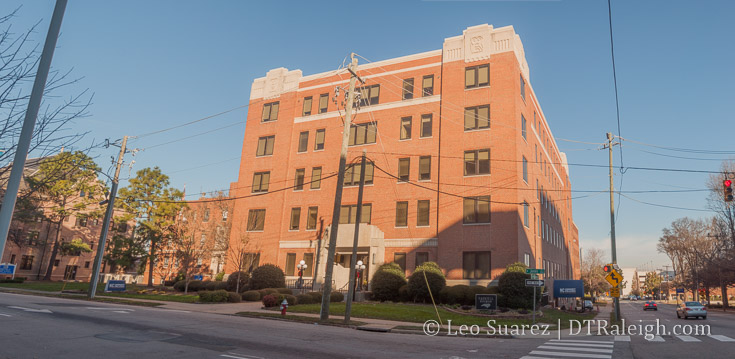
NC State offices in the Caswell Building at the corner of McDowell and Jones Streets.
Instead of immediate gains, I’d like to see the state, partnering with Raleigh, to use Caswell Square as a way to boost nearby activity. It just so happens you have a top 5 visited attraction, the N.C. Museum of Natural Sciences, in the state nearby to the square. With the Nature Research Center recently completed, maybe a park extension in Caswell Square could boost the museum’s profile and bring more tourism to the area.
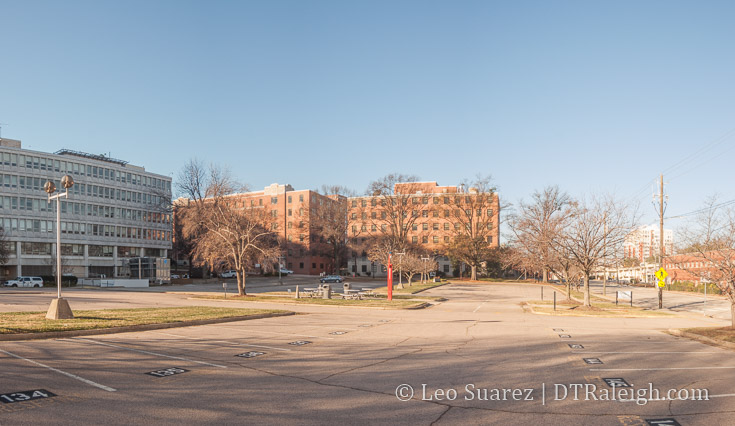
Surface parking around NC State government buildings.
To the east of Caswell Square sits a massive surface parking lot. Parking consolidation is easily a project that the state should undertake, freeing up new land for either more office buildings (mixed-use office buildings by the way) or to be sold for private use.
Ideas like these could have long-term benefits that if done well, could bring the state much more than $1.75 million.
The discussion to sell the land was on the agenda for the Council of State last week but a decision was delayed until a future meeting.
Click for larger
More plans for development aimed to support One Glenwood have been posted. Site plans for what is called Two Glenwood were submitted to the city for a parking deck and 150-room hotel. Built as part of two phases, the deck will come first with the hotel following.
The image above shows the floor plan of the new structure. The parking deck and hotel are actually a smaller portion of this lot. Along Morgan, a 7-story parking deck is planned with 800 spaces. Retail space is also shown in the plans below the hotel.
However, the narrower portion of the lot facing Hargett will be used as surface parking and what looks like another entrance to the parking deck. There’s a side note on the plans that the surface parking lot is being saved for a possible future development.

Warehouse with Shelton’s Furniture on Morgan Street
From our look back at One Glenwood in July of this year, these plans confirm the loss of the warehouse where Shelton’s Furniture is currently located.
With all this activity happening at the southern end of Glenwood Avenue, I wonder if One Glenwood and Two Glenwood could be the “bookend” that Glenwood South needs, possibly extending the district?
Last, I’ve included one of the maps from the site plan as well as a surround shot of the area and more photos. It’s sure to look very different here over the next few years.
Surround shot of Morgan Street, December 2016

Morgan Street, December 2016
Morgan Street, December 2016. Click for larger.
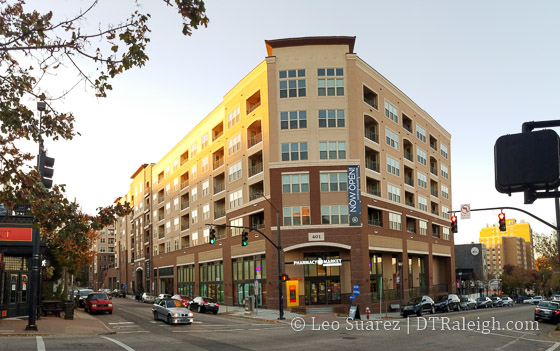
Completed over the summer, The Gramercy Apartments is now open.
The Glenwood South apartment building also has one retailer in it’s space at the corner of North Street and Glenwood Avenue. Glenwood South Pharmacy and Market is a full-service pharmacy and small grocery store. Below are some photos showing a wide selection of eats and drinks.
Home cooks may not find everything they need but with hours of 7am to midnight every day, the service is really convenient for grabbing essentials.

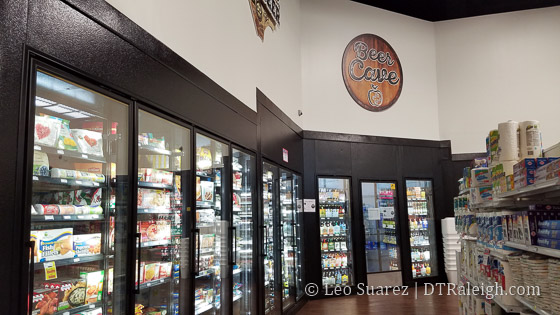
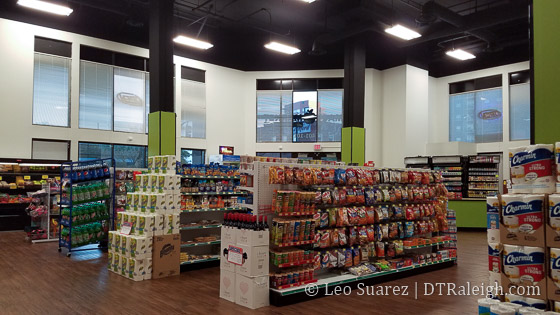
Email readers: This blog post has a virtual reality image. Read the post on the blog to see it.
Looking at 301 Hillsborough Street from across Dawson Street.
Recently submitted site plans for 301 Hillsborough give us some more details as to what might come for the surface parking lots along Hillsborough and Morgan Streets.
SR-93-2016, listed on the city’s development page, shows almost a full-block development consisting of a “mixed use building with approximately 220,007 sf office; 242 residential units; 40,832 sf retail, 176 hotel units, and structured parking (991 spaces)”
Click for larger
Mixed-use indeed.
The site plan shows a floor plan that will encompass practically everything on that block except for the 3-story brick building at the corner of Harrington and Morgan Street. You can kind of see the new building coming up against the old so perhaps it’ll blend right in.
All the existing surface parking will be gone. In addition, the two-story house at the corner of Hillsborough and Harrington will also be removed. That house seems like a perfect candidate for a relocation.

House at 327 Hillsborough being used as offices for a Raleigh law firm
There are a couple things we can see from looking at the site plan. Remember that it is preliminary so things may change but from my assessment Morgan, Hillsborough, and Dawson will change dramatically.
Along Morgan starting from the west:
Along Dawson:
Along Hillsborough starting from the west:
Overall, the parking garage entrances on Hillsborough and Morgan line up and on the inside of the building, there is a roundabout for hotel parking. You can also access the upper levels of the parking deck from here.
Just a detail, the site plan also shows 30 foot planters along the sidewalks of Hillsborough Street and with numerous bike racks. That’s a nice enhancement to the pedestrian space as well as supporting the dedicated bike lanes along Hillsborough Street.
I’m definitely excited for this one as an infusion of this many different uses is sure to add activity on the streets and sidewalks to all different times of the day and week.
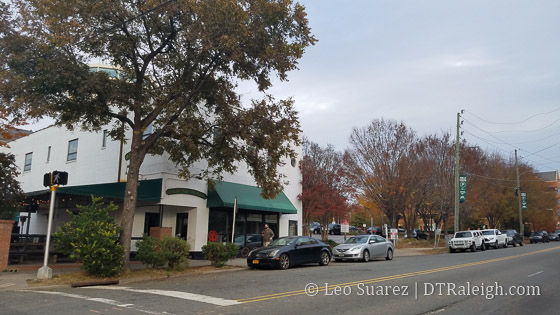
Corner of Morgan and Harrington Streets. Flying Saucer will be getting lots of new neighbors.
Another site plan map. Click for larger.
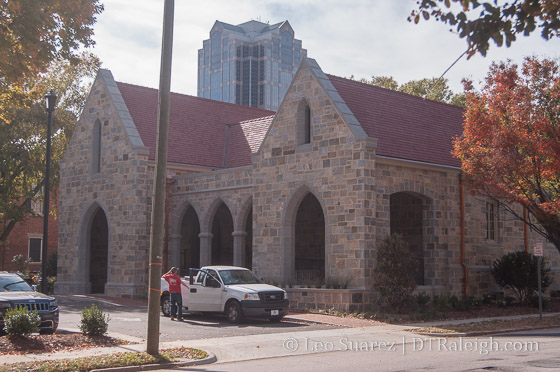
I’ve been a little behind on posting about completed projects so expect a few of those over the coming weeks.
The Christ Church expansion looks to be completed, at least from the outside. The new accessible entrance and meeting spaces were built over some of the surface parking at the corner of Edenton and Blount Streets.
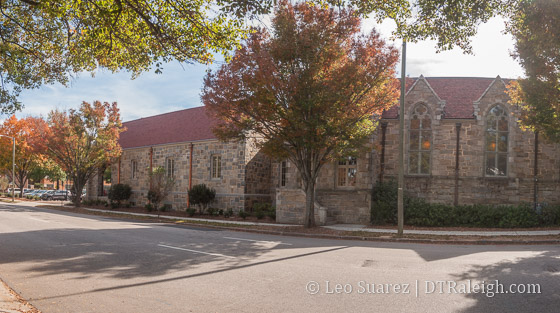
The expansion maintained the stone, exterior look of the historic church and while it takes a sharp eye to notice the difference, I bet once there’s a little wear on the exterior, it’ll match the historic parts of the church.
In the photo above, the addition starts at the stairwell behind the tree in the center and goes to the left. The new addition adds rooms for a library, parlor, kitchen, and other amenities, according to the proposed floor plan on their website.